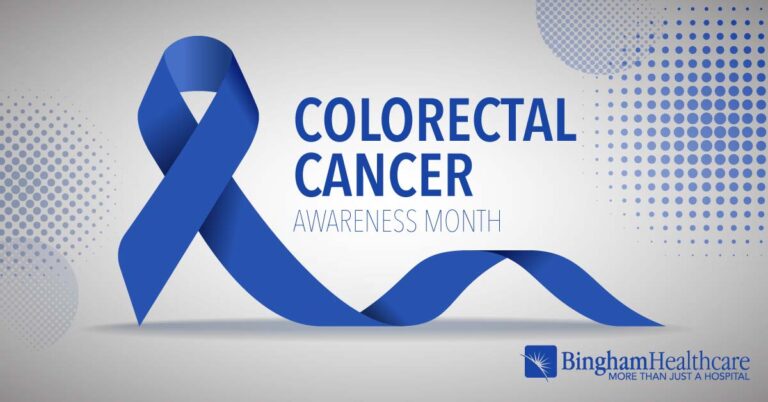
Let the Sun Shine In, Safely
Now that summer has arrived that means all of us will be enjoying more sun in the coming months. This means our skin will receive more than double the amount of exposure to ultraviolet (UV) rays than in recent months.
Use these helpful tips provided by the team at Bingham Healthcare Dermatology to safely enjoy your season in the sun.
AVOID 10 TO 4
For years, health experts and meteorologists alike have warned, “Stay indoors during the heat of the day.” Adam D. Wray, DO, of Bingham Healthcare Dermatology agrees. “Avoid the peak hours of the sun. Its rays are the strongest between 10 a.m. and 4 p.m., so try to schedule outdoor activities around those times,” he says.
SLATHER ON THE SUNSCREEN
Liberally apply sunscreen about 20 to 30 minutes before going outside. “And don’t forget your ears, scalp, back of neck, and the tops of your feet. I have seen some of the worse burns there,” Dr. Wray says. Because the sun emits two types of harmful rays-UVA and UVB-your sunscreen should provide “broad-spectrum” protection against both. Dr. Wray highly recommends using sunscreen with an SPF of 30 or greater with the physical UV blockers zinc oxide or titanium dioxide.”
REAPPLY, REAPPLY, REAPPLY
Julia McGee, PA-C, also of Bingham Healthcare Dermatology, asserts that reapplying sunscreen may be the most neglected step in the sun-safety regimen. “Don’t just put it on and forget it,” she says. “Sunscreen should be reapplied about every two hours while you’re outdoors, and every 45 minutes if you’re swimming.”
HAT’S IT!
Head out with a hat that protects your face, neck and ears. Choose one with a wide brim at least three to four inches around for suitable coverage. The bucket and wide-brimmed farmer’s hats, in a lightweight straw or cotton twill, are two classic, stylish choices.
SEEK SHADE
Seek shade, but do so with caution, says Dr. Wray. “While trees and umbrellas provide protection, you still need to protect yourself under them. The sun’s rays can scatter, penetrate and reflect to reach you.”
DRESS FOR THE OCCASION
Covering up in dark, tight-knit fabric is the best way to protect your skin, but it’s no fun in the summer heat. Fortunately, some companies now make lightweight clothing with effective sun protection. These items bear and ultraviolet protection factor of UPF (think of it as an SPF for fabric) of 15 to 20 on their labels. Check out online retailers sunsolutionsclothing.com and sharksuit.com, which offer attractive options with UPF.
PLAY MOVIE STAR
Forget paparazzi cameras; you have a better reason to shield your eyes. “The eye area is incredibly vulnerable,” Dr. Wray says. “Prolonged sun exposure can damage your eyes and increase your risk of developing eye disease.” He recommends sunglasses that block 99 to 100 percent of UVA and UVB radiation.
ADD IT ALL UP
Julia also advises knowing what medications you’re taking and their side effects. “Some can make you really sensitive to the sun and cause burs.” Though each of these tips is important, adhering to one or two isn’t enough, Julia McGee warns. “Doing just one thing won’t adequately protect you against the extensive sun exposure you get in the summer months. Wear the hat, the clothing, the sunglasses, and the sunscreen. They’re essential…for everyone.”
YOUR SKIN CARE RESOURCES
In addition to taking these precautions to stay safe and have fun in the sun, keeping a close eye on your skin is the key to reducing your risk of melanoma—one of the most common forms of cancer.
More than 3.5 million cases of skin cancer are diagnosed each year and account for nearly half of all cancers in the U.S., according to the American Cancer Society. A staggering 1 in 5 people will develop skin cancer over the course of their lifetime. Approximately 75 percent of all skin cancer deaths are from melanoma, which is a cancer of the pigment producing cells in the skin, known as melanocytes.
Melanoma begins on the surface of the skin where it is easy to see and treat. In fact, this most serious type of skin cancer is always curable when it’s found in its very early stages.
Your Skin Care Resources in East Idaho
If you are interested in improving your skin’s appearance, please call to schedule a skin consultation with one of our leading skin experts.
Adam D. Wray, DO
As an experienced dermatologist and skin cancer specialist, Dr. Wray of the Bingham Memorial Dermatology Center has extensive training in pigmented and non-pigmented skin lesions, skin surgery, mole and wart removal, and skin cancer screenings. He enjoys spending time educating his patients about skin conditions and taking care of their needs by performing same-day biopsies, phototherapy, labs, and cosmetic procedures that enhance the skins look and feel. Dr. Wray is always welcoming new patients.
To schedule a consultation with Dr. Wray, please call (208) 535-3637 in Idaho Falls, (208) 233-4455 in Pocatello and Soda Springs, or (208) 782-2930 in Blackfoot.
Julia McGee, a skincare specialist, has the knowledge and skills required to help you with all your skincare needs. Julia sees patients on the first floor of the Bingham Memorial Medical Plaza in Blackfoot, and at the Physicians and Surgeons Clinic of Pocatello. To schedule a consultation, call her Blackfoot office at (208) 782-2930 or the Pocatello office at (208) 233-4455.
David’s current special interests are in medical dermatology—seeing patients for various medical skin diseases such as skin cancer, rashes, acne, spot checks, and full body skin checks. He has experience in minor outpatient procedures such as skin biopsies, skin cancer excisions, cryotherapy, and cyst/lipoma excisions.
To schedule a consultation with David, please call (208) 782-2930 in Blackfoot, (208) 535-3637 in Idaho Falls, or (208) 233-4455 in Pocatello, Malad, and Soda Springs.
Our content is reviewed regularly and is updated when new and relevant evidence is made available. This information is neither intended nor implied to be a substitute for professional medical advice. Always seek the advice of your physician or other qualified health provider prior to starting any new treatment or with questions regarding a medical condition.
Return to Articles


